 W
WAbraham is a 1993 television film based on the life of the Biblical patriarch Abraham produced by Five Mile River Films. It was shot in Ouarzazate, Morocco. Directed by Joseph Sargent, it stars Richard Harris, Barbara Hershey, Maximilian Schell, and Vittorio Gassman.
 W
WAmdur was an early Hasidic dynasty originating from the town of Indura, Belarus, where it was founded by Rabbi Chaim Chaykl of Amdur (1730-1787). The court of Amdur was among the earliest Hasidic dynasties and was known for its fiery and passionate nature, which often put it into direct conflict with local Misnagdim. After the death of the second Amdurer Rebbe, Rabbi Shmuel of Amdur, the majority of the dynasty became absorbed by Chabad Hasidism, yet small fractions of Amdur Hasidism continued to exist in small communities in Belarus and Poland.
 W
WThe first issue of Der Bay was published in January 1991 as a local newsletter for the Yiddish community in the United States. As an Anglo-Yiddish publication, the articles were mainly in English with some Yiddish and others in transliteration. It grew steadily so that Yiddish club leaders, Yiddish teachers, translators, performers and klezmer group leaders in every state and in 35 other countries received it.
 W
WBetanure is a village in Dohuk Governorate in Kurdistan Region, Iraq. It is located near the Iraq–Turkey border in the district of Amadiya and the historical region of Barwari.
 W
WBirkat HaBayit is a Jewish prayer often inscribed on wall plaques or hamsas and featured at the entrance of some Jewish homes. There are various versions of the prayer.
 W
WThe Colegio Israelita de México A.C., providing services as Colegio Israelita de México ORT, is a private K-12 school in Lomas de Vista Hermosa, Cuajimalpa, Mexico City. It is also known by its acronym, CIM, or as the Idishe, the first word in its Yiddish name.
 W
WDaniel Kahn & the Painted Bird is a Germany-based klezmer band founded by Jewish-American singer-songwriter and actor Daniel Kahn, originally from Detroit, Michigan. The band was formed in 2005 and is based in Berlin. They have released five albums through German world music label Oriente Musik. The name of the band comes from the title of the novel The Painted Bird by Jerzy Kosiński.
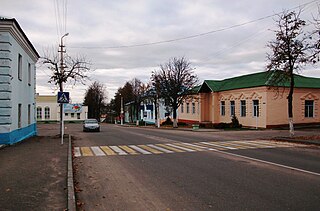 W
WDokshytsy is a town in the Vitebsk Region of Belarus with a significant Chassidic history. It is 200 km (124.27 mi) southwest of Vitebsk and a kilometer from the source of the Berezina River. Its population in 2010 was 6,600.
 W
WEin Yaakov is a 16th-century compilation of all the Aggadic material in the Talmud together with commentaries. Its introduction contains an account of the history of Talmudic censorship and the term Gemara. It was compiled by Jacob ibn Habib and by his son Rabbi Levi ibn Habib.
 W
WErev Rav was a group that included Egyptians and others who had joined the Tribes of Israel on the Exodus. According to Jewish tradition, they were accepted by Moses as an integral part of the people. Their influence is said to have been involved in the golden calf and other incidents where the people questioned Moses and his laws.
 W
WGedolim pictures are photos or sketches of famous rabbis, known as gedolim, who are revered and admired by Jews.
 W
WIn Judaism, Hagalah is a method of making utensils suitable for use with kosher food by immersing utensils in boiling water.
 W
WHanukkah Rocks is a 2005 album by The LeeVees.
 W
WThe Ishim or Eshim are a class of angels said to be the closest to the affairs of mortals. The Ishim are also comparable with the Erelim or the Bene Elim/Bene Elohim. The closest analogue in Christian angelology is the order of Thrones or Angels.
 W
WJahaziel is the name of five characters mentioned in the Hebrew Bible. Jahaziel means "God sees" or "Yah looks". Four of the characters by this name are not credited with any independent action, but simply mentioned in passing as one of several priests or a member in a list of warriors. However, one Jahaziel, a Levite, is mentioned as delivering a divine message.
 W
WThe Jewish Community Center of UAE is a community led by the Chabad Rabbi Levi Duchman and community president Solly Wolf.
 W
WSpeyer in Germany was the hometown of one of the most important Jewish communities in Middle Ages in northern Europe. Bishop Hutzmann and Salic emperor Henry IV encouraged Jewish refugees from Mainz to the foundation of a Jewish community by facilitating them.(see:History of the Jews in Speyer)
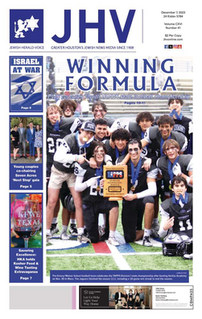 W
WThe Jewish Herald-Voice is an award-winning weekly community newspaper serving the Jewish community of Houston and the Texas Gulf Coast for more than 100 years.
 W
WThe Jews' Temporary Shelter is a charity in London which helps homeless Jews.
 W
WThe Kaufmann manuscript is a complete Hebrew manuscript of the Mishnah. It is part of the collection of David Kaufmann located at the Library of the Hungarian Academy of Sciences in Budapest.
 W
WKollel Shomrei haChomos is a financial charity institute or kollel set up to support the community of Hungarian-Jews who emigrated to the Holy Land, hence it is called by many the Hungarian Kollel. The Hungarian Jews separated themselves in 1858 from its mother institute Kolel Chibas Yerushalayim which at one point in time included the Jewish communities of the entire Austrian Hungarian Kingdom. Kolel Chibas Yerushalayim was itself a breakaway from the original Kolel Perushim, established by the students of the Vilna Gaon. Two leading Hungarian rabbis were appointed as the "Nesyim" or "Presidents of the Kolel, Avraham Shmuel Binyamin Sofer, author of Ketav Sofer, and Meir Eisenstein. In honor of these two leaders the Hungarian Kolel was also called "House of Sofer and Meir"
 W
WKtav Stam is the specific Jewish traditional writing with which Torah scrolls, phylacteries (Tefillin), Mezuzot and the Five Megillot are written. Stam is an acronym denoting these writings, as indicated by the gershayim punctuation mark. One who writes such articles is called a Sofer Stam. The writing is done by means of a feather, and ink onto special parchment called klaf. There exist two primary traditions in respect to the formation of the letters, Ktav HaAshkenazi and Ktav HaSefardi, however the differences between them are slight.
 W
WThe Living Torah Museum is a group of Orthodox Jewish museums that opened in 2002 and drew approximately 600,000 visitors in the first twelve years. The museums were founded and are operated by rabbi and author Shaul Shimon Deutsch. The first location is at 1601 41st Street in Borough Park, Brooklyn, New York, United States, and was named a Best Museum of New York by The Village Voice. A second location, in the Catskill Mountains town of Fallsburg, operates during the summer season. A third location, which was open year-round in Lakewood, New Jersey, closed in 2014.
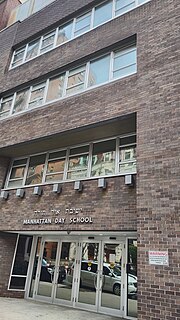 W
WManhattan Day School, often referred to as MDS, is a co-educational Modern Orthodox Jewish yeshiva elementary school located on the Upper West Side of Manhattan. It was founded in 1943 as Yeshivat Ohr Torah Community School, the first Jewish all-day independent school on the West Side of Manhattan. The Rabbis and congregants of Congregation Ohab Zedek, The Jewish Center, and helped found the school.
 W
WThe Meisel family is a distinguished Bohemian rabbinic family originally from Prague, who descend from Yitskhak Eizik Meisels, a paternal 10th generation descendant of the Exilarch, Mar Ukba. From the early 16th century and onward, members of the family such as Mordecai Meisel achieved great economic prominence in Prague, becoming one of the wealthiest Bohemian Jewish families. It was also during this time, that a branch of the family descending from Simcha Bunim Meisels (1545-1624) immigrated to Kraków, Poland due to rising Antisemitism in Bohemia. In Poland the family produced several rabbinic scholars, such as Dow Ber Meisels and Moses Bonems-Meisels. Among the families descendants are: Shabbatai HaKohen, Yitzchak Yaacov Reines, Alexander Sender Shor, as well as the Peshischa, Sulitza, Ropshitz, Bobov, Biala, Kretshnif, and Kotzk Hasidic dynasties.
 W
WA Memorbuch is a book dedicated to the memory of martyrs in the Ashkenazi world.
 W
WMidras uncleanness is one of the forms of ritual impurity in Judaism which can be transmitted by either an object or person. The term may be translated as pressure uncleanness.
 W
WThe minor tractates are essays from the Talmudic period or later dealing with topics about which no formal tractate exists in the Mishnah. They may thus be contrasted to the Tosefta, whose tractates parallel those of the Mishnah.
 W
WMo'ed Katan or Mo'ed Qatan is the eleventh tractate of Seder Moed of the Mishnah and the Talmud. It is concerned with the laws of the days between the first and last days of Passover and Sukkot. These days are also known as "Chol HaMoed" days. Mo'ed Katan also discusses the laws of Aveilus (Bereavement). Consisting of only three chapters, it has a Gemara from both Babylonian Talmud and the Jerusalem Talmud.
 W
WS'chach is the Hebrew name for the material used as a roof for a sukkah, used on the Jewish holiday of Sukkot.
 W
WShemaiah was a prophet in the reign of Rehoboam. He is venerated as a saint in the liturgical calendar of the Eastern Orthodox Church on January 8.
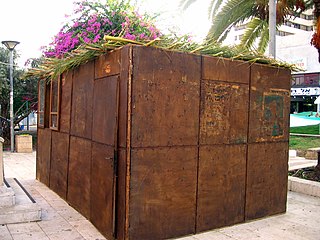 W
WSukkah is a book of the Mishnah and Talmud. It is the sixth volume in the Order of Moed. Sukkah deals primarily with laws relating to the Jewish holiday of Sukkot. It has five chapters.
 W
WTachrichim are traditional simple white burial furnishings, usually made from 100% pure linen, in which the bodies of deceased Jews are dressed by the Chevra Kadisha, or other burial group, for interment after undergoing a taharah.
 W
WThe Tomb of Aaron is the name of the supposed burial place of Aaron, the brother of Moses. There are two descriptions of its location in the Torah, and different interpretations of its location. Although in Jewish tradition, the location of Aaron's grave, like that of Moses, is shrouded in mystery, the Islamic tradition places it on Mount Hor, near Petra in Jordan.
 W
WThe Hebrew expression Torat Eretz Yisrael refers to the idea that Torah thoughts emanating from the land of Israel are of great religious status. In the Midrash Genesis Rabbah it is stated: “there is no Torah like the Torah of the Land of Israel, and there is no wisdom like the wisdom of the Land of Israel." Another midrash in the Sifre indicates that there is a unique flavor to the land of Israel because the Torah is located in it.
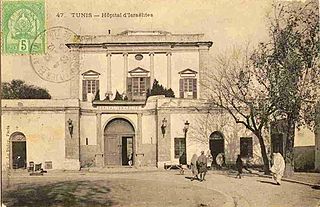 W
WThe Jewish Hospital of Tunis was a former Tunisian hospital founded for the Tunisian Jewish community. It was founded by Jewish doctors from Livorno. It opened in 1895 at Place Halfaouine, a suburb north of the Medina of Tunis.
 W
WUlpana is a girls-only Jewish high school in Israel, delivering intensive religious education, alongside the state curriculum. The Ulpana is to be found primarily in the Religious Zionist community. It is the equivalent of a Mamlachti dati boys-only yeshiva high school . Post high school, women often proceed to study at a Midrasha, or to undertake Sherut Leumi.
 W
WVos Iz Neias? also called "VIN News" is an online news site that caters to the Orthodox Jewish and Hasidic communities in the United States. Its coverage is primarily focused on the New York metropolitan area and Israel. Vos Iz Neias and its competitors, Matzav, and Yeshiva World News, are sources of online news for American Orthodox Jews.
 W
WYeshiva gedolah, known in the United States as bais medrash, is a type of yeshiva, a Jewish educational institution, which is aimed at students in their later teens or younger twenties. This contrasts with a Yeshiva Ketana/Mesivta where students are typically in the early teens.
 W
WZadkiel is the archangel of freedom, benevolence and mercy, and the patron angel of all who forgive, also known as Sachiel, Zedekiel, Zadakiel, Tzadkiel, and Zedekul. Rabbinical tradition considers him to be the angel of mercy.
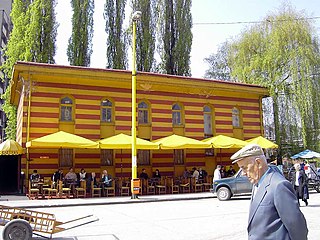 W
WThe Zenica Synagogue was a Jewish Synagogue that existed in the town of Zenica, Bosnia and Herzegovina between the years of 1903 and 1941. Today it is a National monument of Bosnia and Herzegovina.
 W
WIn the Hebrew Bible/Old Testament Book of Job, Zophar the Naamathite is one of the three friends of Job who visit to comfort him during his illness. His comments can be found in Job 11:1–20 and Job 20:1–29. He suggests that Job's suffering could be divine punishment, and goes into great detail about the consequences of living a life of sin.
 W
WEliezer Zweifel (1815–1888) was a Russian-Jewish writer who was associated with the Jewish Enlightenment movement (haskalah). Zweifel's writings on Hasidic Judaism was considered favorable toward the movement. His book Shalom al Yisrael is believed to be one the earliest academic works on the Hasidic movement.